Last week, I attended First Round Los Angeles, a unique branding conference put on by Under Consideration. At First Round, speakers share their first-round presentation process by showing the original PDF/Keynote/PPT file that they presented to a client the very first time they showed their identity design. The result is a conference that’s as much about process and presentation skills as it is about design.

Speakers came from a range of agencies. Giants like Jones Knowles Ritchie were among solo practitioners and two person studios. It was an incredible chance to gain insights into a critical moment of the design process.
We’re always looking at and inspired by the work of other studios, but we know better than anyone the journey from an idea to what’s shown in the final case study is rarely a straight shot. Most of the time, that knowledge of what it took to get there is internal– we show the world the finished product, and it seems like we went from before to after without any detours. In creative work, detours abound. Understanding the paths that other agencies take to bring brands into the world was fascinating.
This kind of open industry conversation makes all of our work better. So I’m sharing what I saw as a way to make it even more available. We already follow a lot of these principles at Flux, but it’s always good to be reminded of what is really impactful in presentations. As designers, we’re constantly translating our work for non designers to understand. Only part of the job is making great work– the other part is communicating that work to the client. That’s not easy, and the more effectively we can do it, the more effectively we can bring intelligent design into the world. Here are some of the major insights that spanned across presentations.
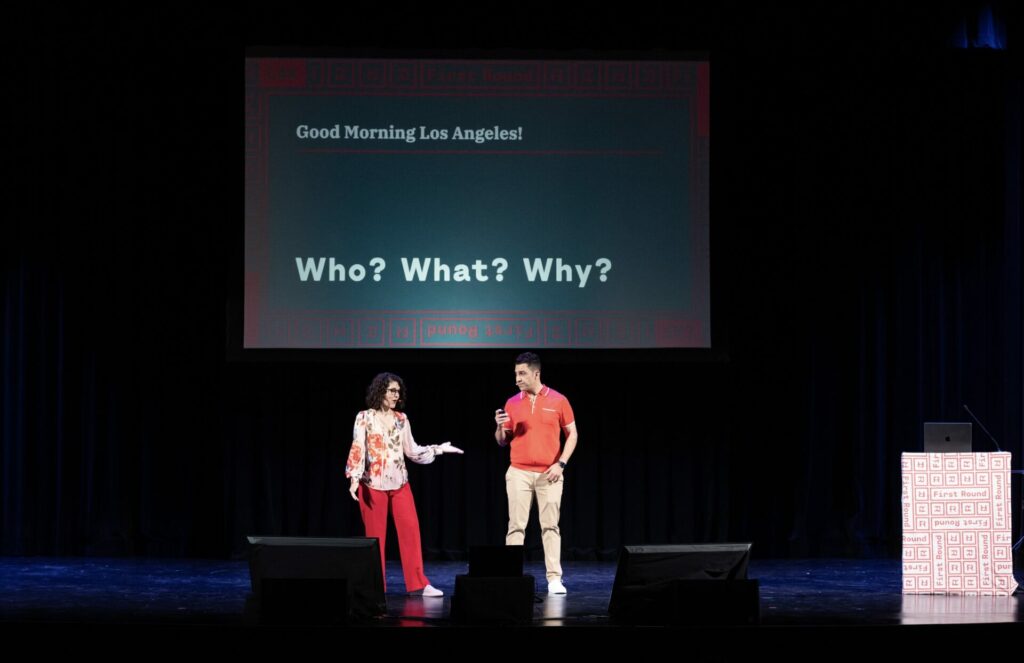
1. Always name your concepts.
It’s a simple one, but it goes a long way. Giving each option more introduction than “option 1” is really powerful. It prepares the mind and gets the client into the space that this is a design ethos, not just a logo. Some presentations simply gave a conceptual name, while others went further with a blurb in the brand voice and an inspiration quote to give the name more support.
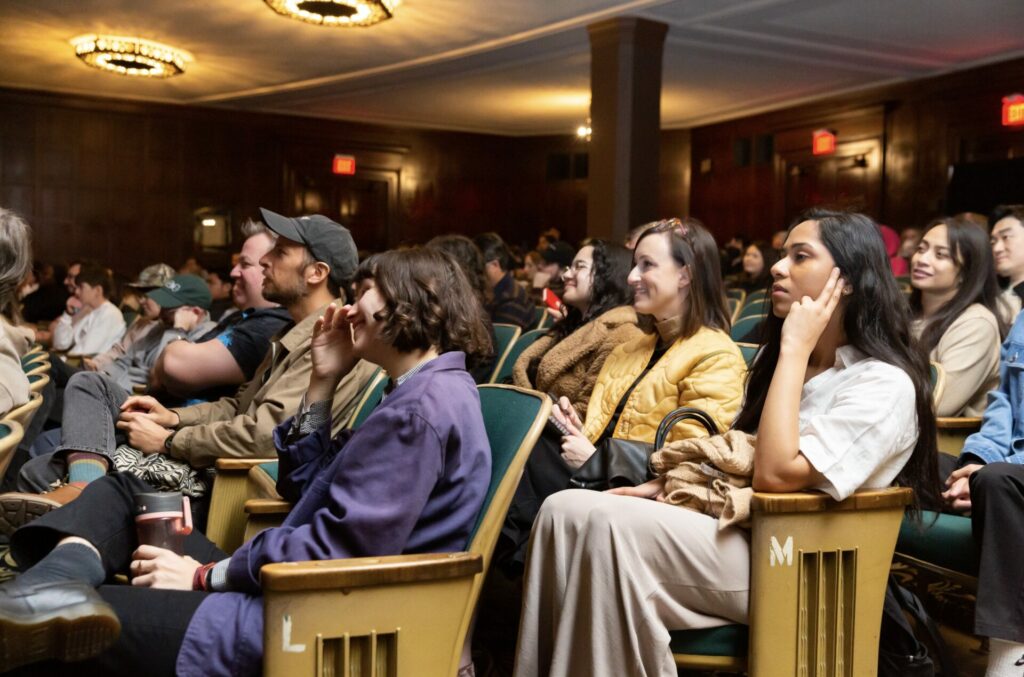
2. Push the boundaries in round one.
The purpose of the first round is to put a dart on the dart board. And in stabilizing the direction, it’s better to go far out than play it too safe. You can always bring a lofty idea back down to earth, but you can’t always pump up a boring one. Even if the client is uncomfortable, that’s the only way to start a conversation. A point of view doesn’t form from the comfort zone. Don’t be afraid to show things that you know won’t ever appear in real life– the point is to test the limits.
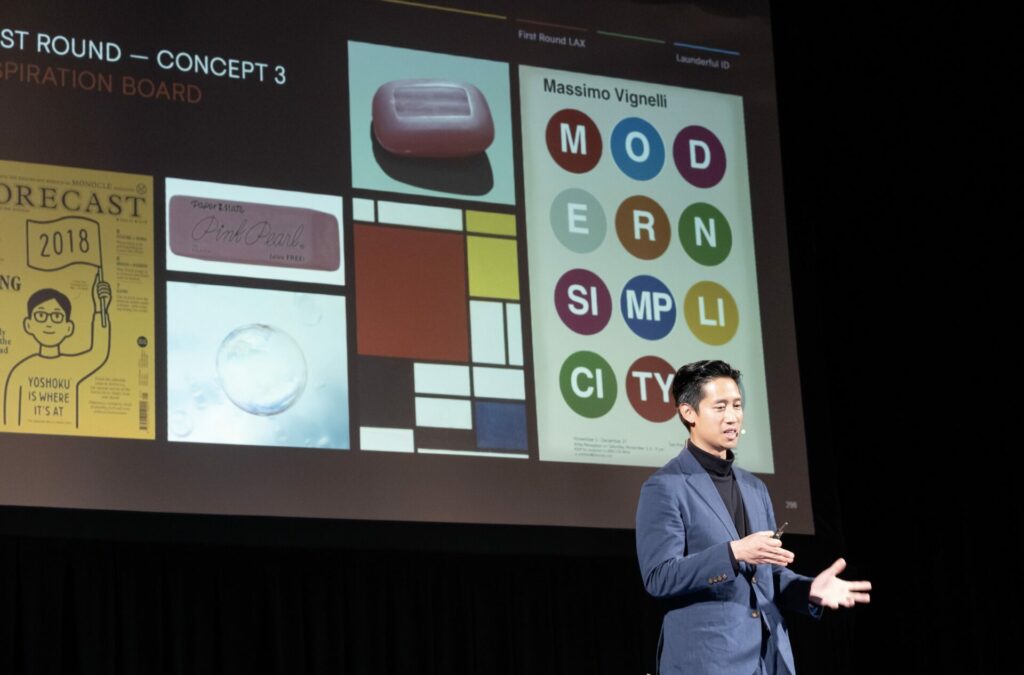
3. Mood boards are visual insurance
Mood boards are in just about every presentation we do. I find that client sometimes have a hard time understanding their purpose– they get hung up on a particular image, or can’t get into why we’re showing design that isn’t theirs. One of the presenters described mood boards as “visual insurance”, a way to show the client the ethos of the visual language before we do all the work to create the pieces ourselves. I thought this was really clear, and something that would be easy for a design challenged client to understand. It’s a safety procedure, something we do so we can have a piece to measure against later on.

4. Real mockups with real words.
Mock ups really matter. Always always mock it up, and go as far as you can with it. Even if that’s not how the package design will look in the end, mock ups on actual brand applications are essential for getting a client to understand that we are talking about more than a logo– we’re talking about a visual system. That’s also why you should avoid lorem ipsum in your mockups as much as possible. Voice and visuals work together to give a brand presence, so using real brand messaging makes mockups land so much more powerfully.
5. Enroll the client in the process.
Making great work is part of our job. The other part is enrollment. If we can’t get the client to see why our idea is great, it doesn’t matter how great it is. Several presentations shared different strategies for this, including really bringing the client into the design process. In their work for Fanta, the team at Jones Knowles Ritchie showed the client their entire design process, walking them through the strategic decisions they made to get to the actual R1 logo. Bringing the client into our heads helps them think and see like us.
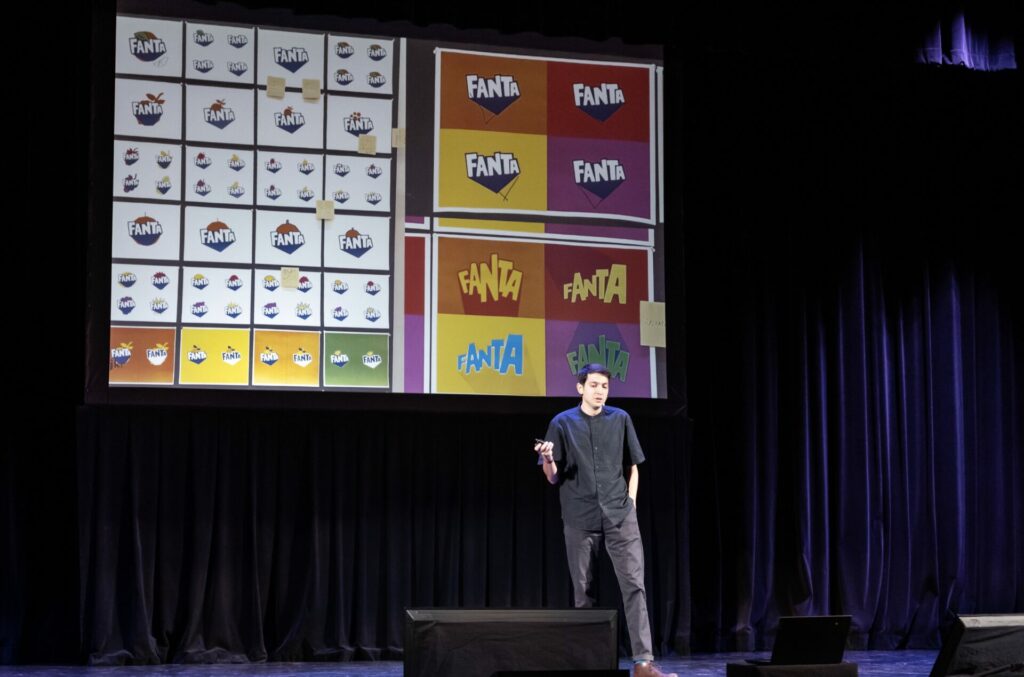
6. Propose solutions like a doctor.
This was something that Meryl Vedros of Vedros Studio talked about in her presentation. When you go to the doctor, the doctor suggests a limited number of solutions (sometimes just one!), and as a patient you trust that one of those will be right. While it’s great to bring the client in our process, we also need to come from a position of expertise, stating our professional opinion clearly. At the same time, we must acknowledge the trust that is required on their part, and respect it.
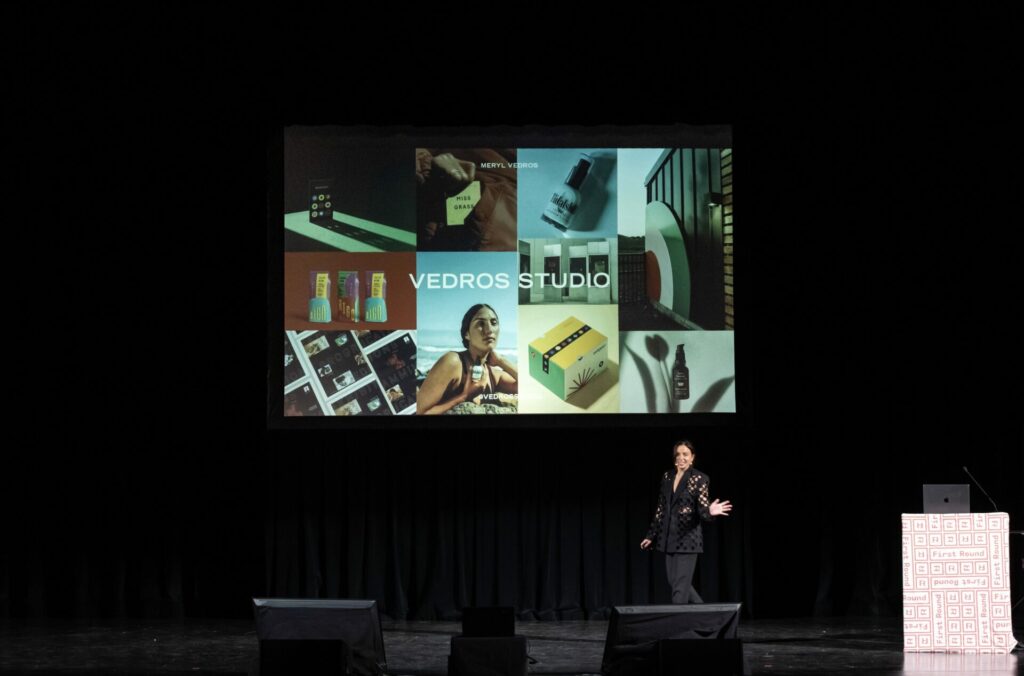
7. Dive as deep as possible.
What people say and what people mean are two different things. In their work for Glassdoor, Koto went through an extensive research and interview process, and kept hearing that the team at Glassdoor felt their brand had become overly boring, not reflecting their rebellious spirit. The Koto team had trouble understanding how a workplace review platform was rebellious, until they discovered the story of how Glassdoor was born– an employee saw a salary list on a copier and found out they were being paid less, and set out to make a platform that would limit that possibility for others. The rebellious spirit was the concept that it was founded by workers, for workers. That informed their design in so many ways. Before the first round, you really need to know your client inside and out.
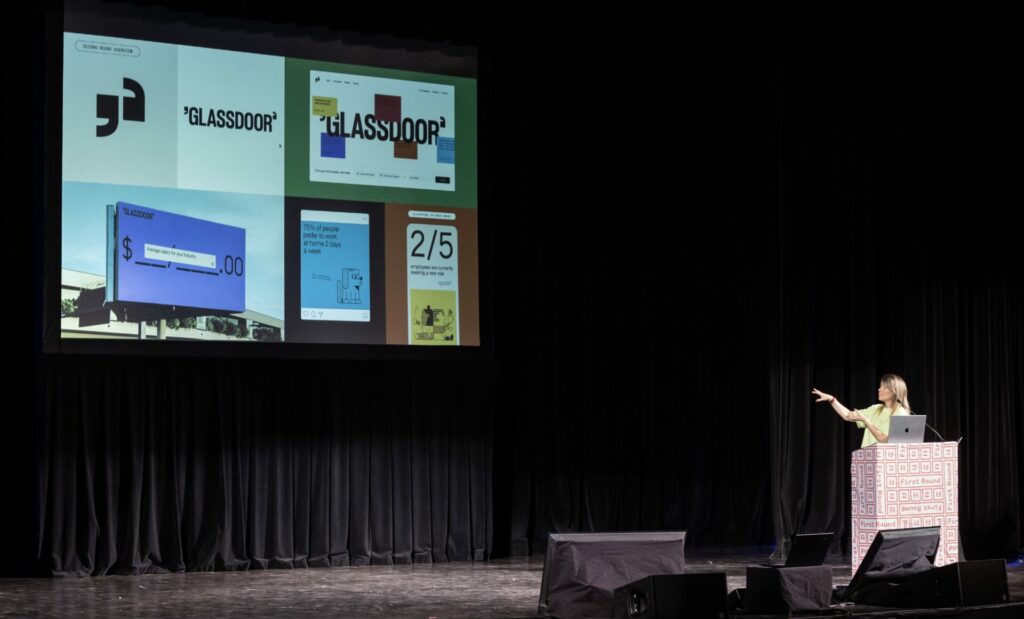
8. Pace your presentations.
Thinking about how to take the client on a journey through your presentation is key. Start with something to get them in the right headspace about what this is (just the start), show the elements of the brand, and then show mockups that include both big brand moments (billboards) and small ones (business cards). Koto had a really interesting approach that I quite liked– at the end of the concept, when showing all the graphic elements for that design option in a summary slide, they first showed a summary slide of the current brand elements. The idea was to say, “here’s where you are– and here’s where you could be.” It was an effective way to get excited, rather than scared, about a big change.
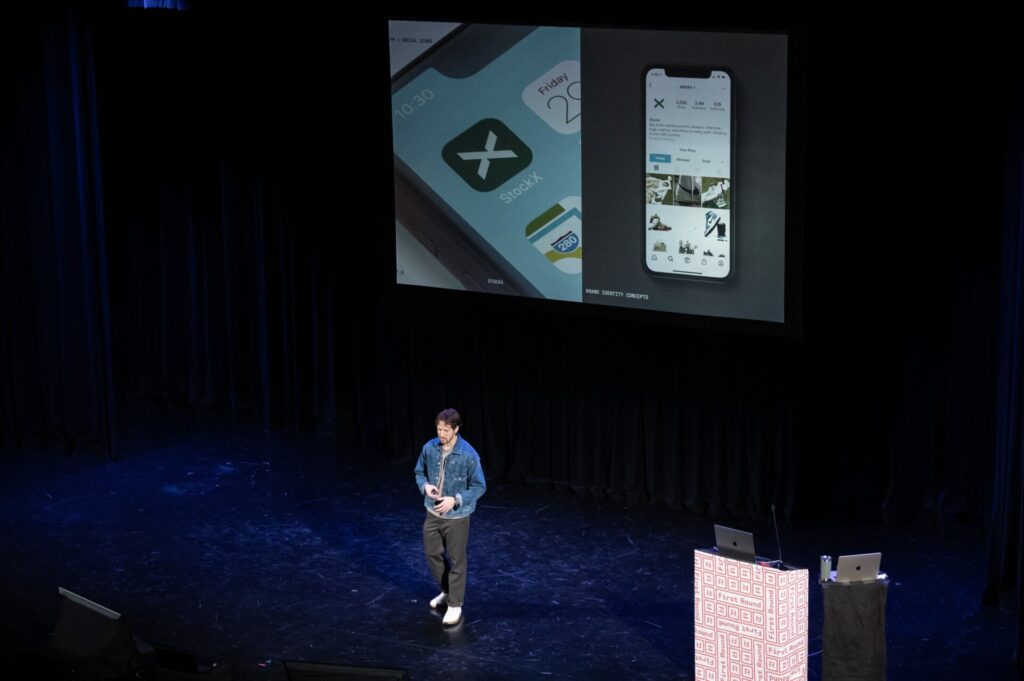
9. Only present work you love.
It might seem like a no-brainer, but it’s important to keep in mind. Make sure everything you present would be something you’d be happy to continue with. No one knows why, but the one concept you think is a “throw away” is oftentimes the one that gets picked. Designers are all familiar with feedback from client to combine elements of multiple concepts into one– it came up in almost every presentation at the conference. But as Ross Burwell of Hype Type studio pointed out, if every concept fits the brief and you love them all, combining pieces is just another exciting design problem to solve. It just makes the work better. You can certainly have a favorite, but make sure every option is meaningful.
There were so many more insightful moments from the conference. I felt like my brain was on fire! Thanks so much to Under Consideration, who also put on the yearly Brand New Conference and run the brand identity publication Brand New. They are doing such great things to bring our industry together and elevate the level of exchange that makes all of our processes– and the work for our clients– better. I can’t wait to go to the next one. Catch the next First Round in New York on May 10!